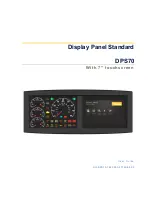
S12 Vet Monitor User’s Manual
8-15
8.6.
Arrhythmia Monitoring
Arrhythmia analysis provides information about your patient’s condition, including
heart rate, PVC rate, rhythm and ectopics.
8.6.1.
Safety Information
WARNING
:
Arrhythmia may affect heart rate. When monitoring arrhythmia patients, do
not rely entirely on the alarm information calculated by heart rate, but always
place the patients under close surveillance.
Arrhythmia function is applicable for detecting certain ventricular and atrial
arrhythmias, not all atrial or supraventricular arrhythmias. Sometimes, it may
detect wrong arrhythmia. Therefore, doctors must combine more clinical
manifestations to analyze arrhythmia information.
CAUTION
:
Since the arrhythmia detection algorithm sensitivity and specificity is less than
100%, sometimes there may be some false arrhythmias detected and also some
true arrhythmia events may not be detected. This is especially true when the
signal is noisy.
The amplitude of ECG waveform will affect the arrhythmia detection and
heart rate calculation sensitivity.
If the QRS amplitude is too low, the monitor may not be able to calculate the
heart rate and false asystole may occur.
Arrhythmia detection may not be available during ECG relearning. Therefore,
the patient’s state should be closely observed during ECG relearning and
within a few minutes after completion.
8.6.2.
Arrhythmia Events
This section lists all arrhythmia events and their criteria.
















































